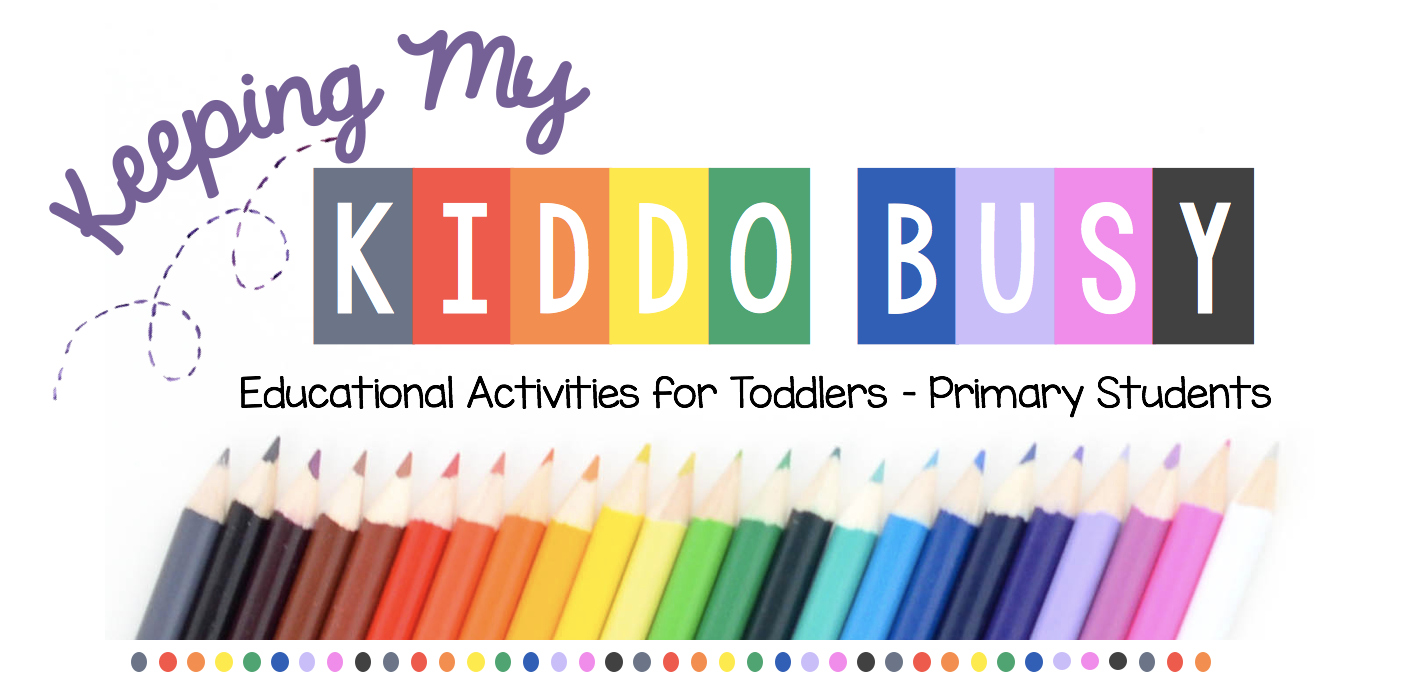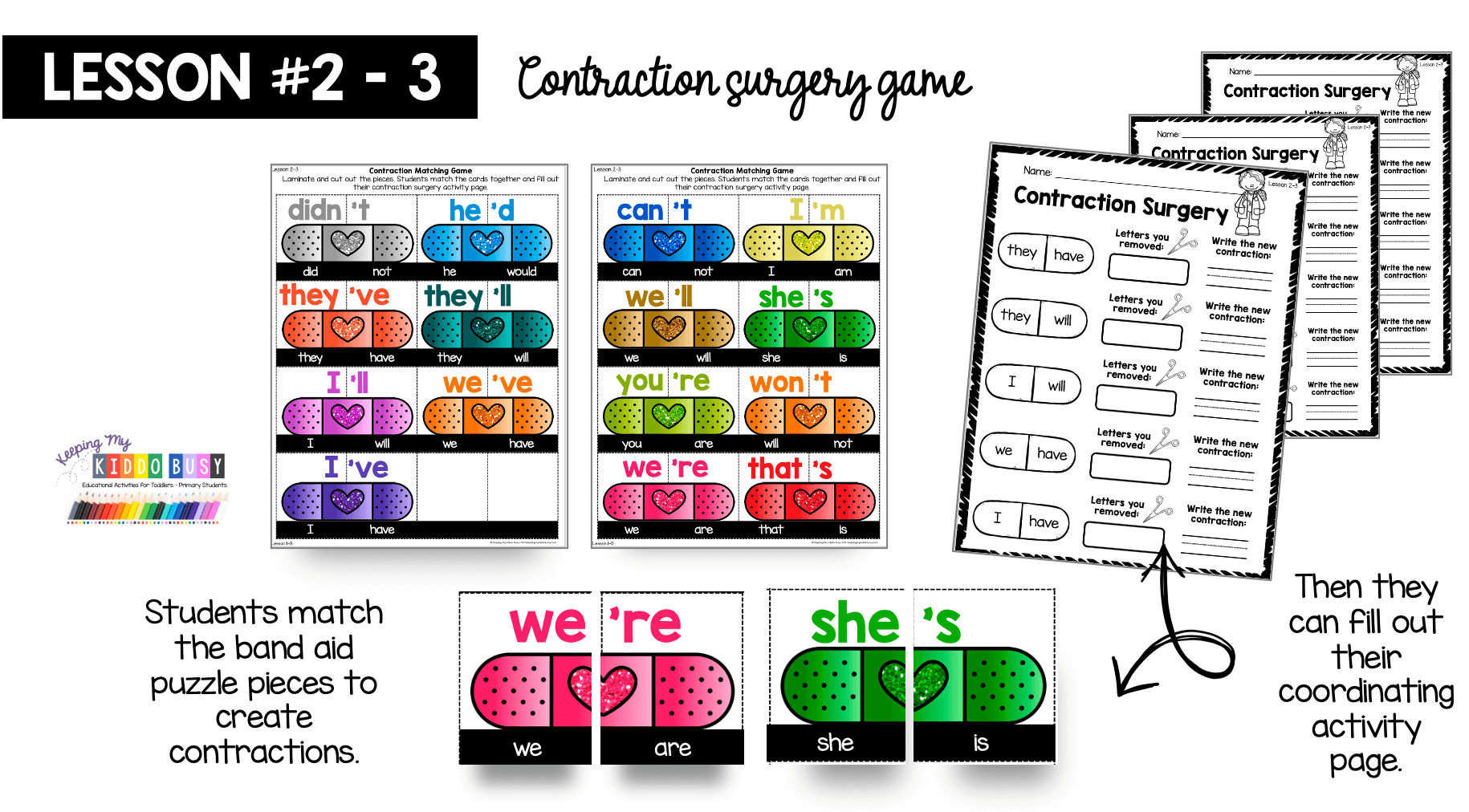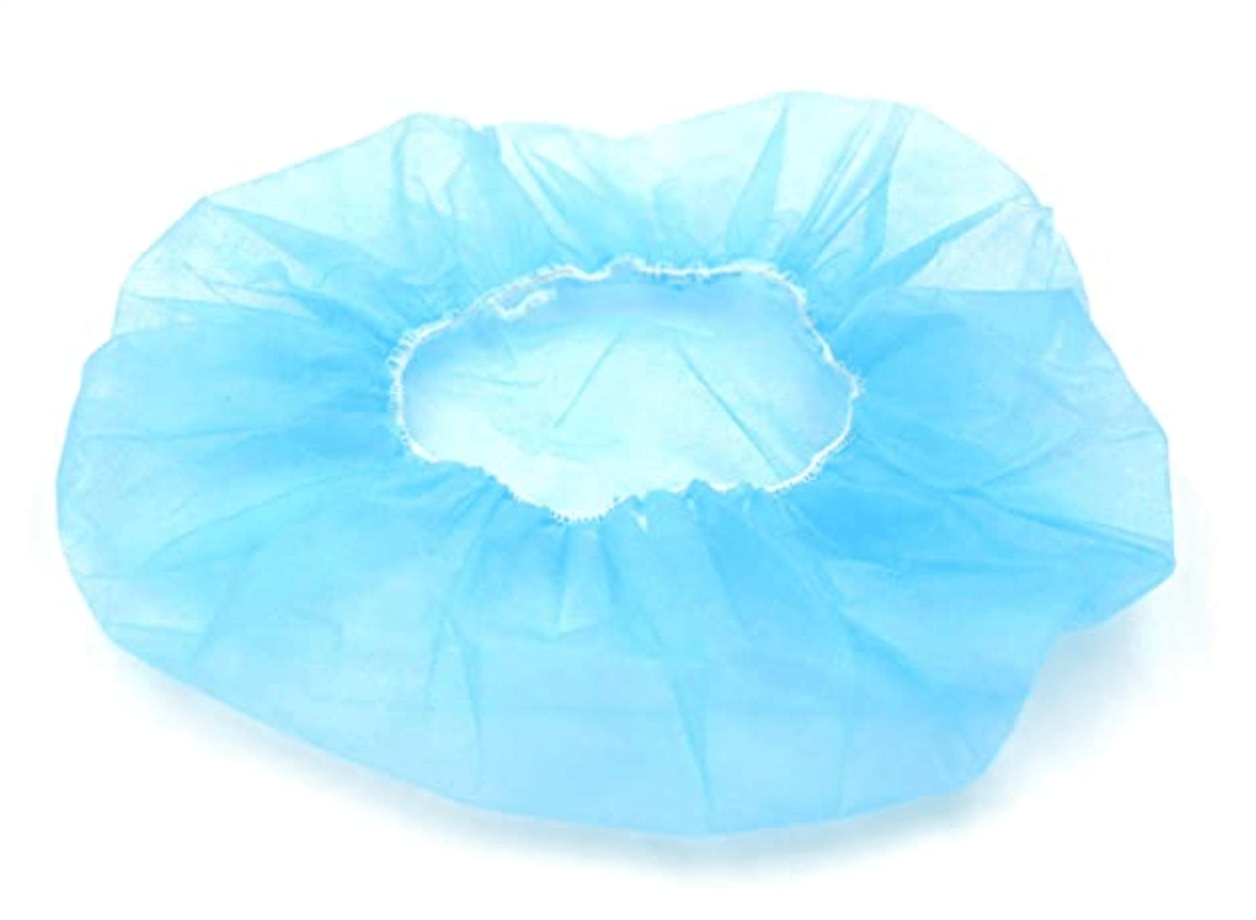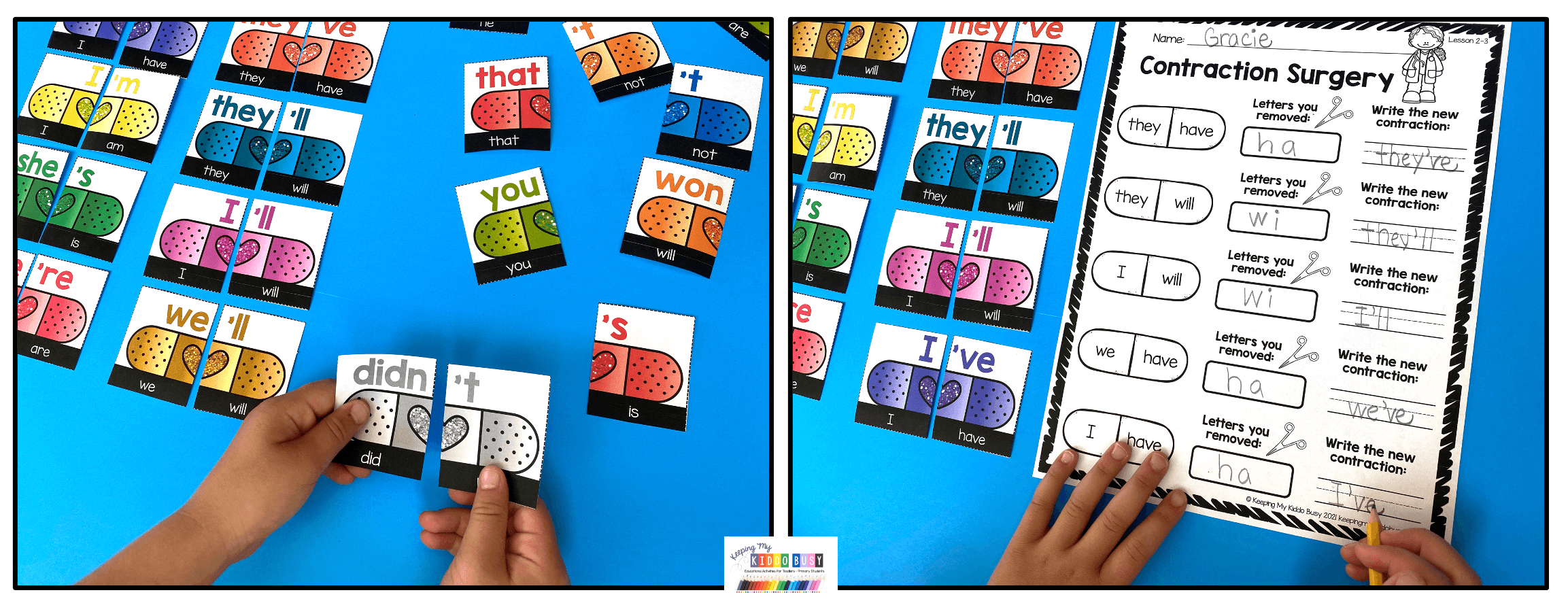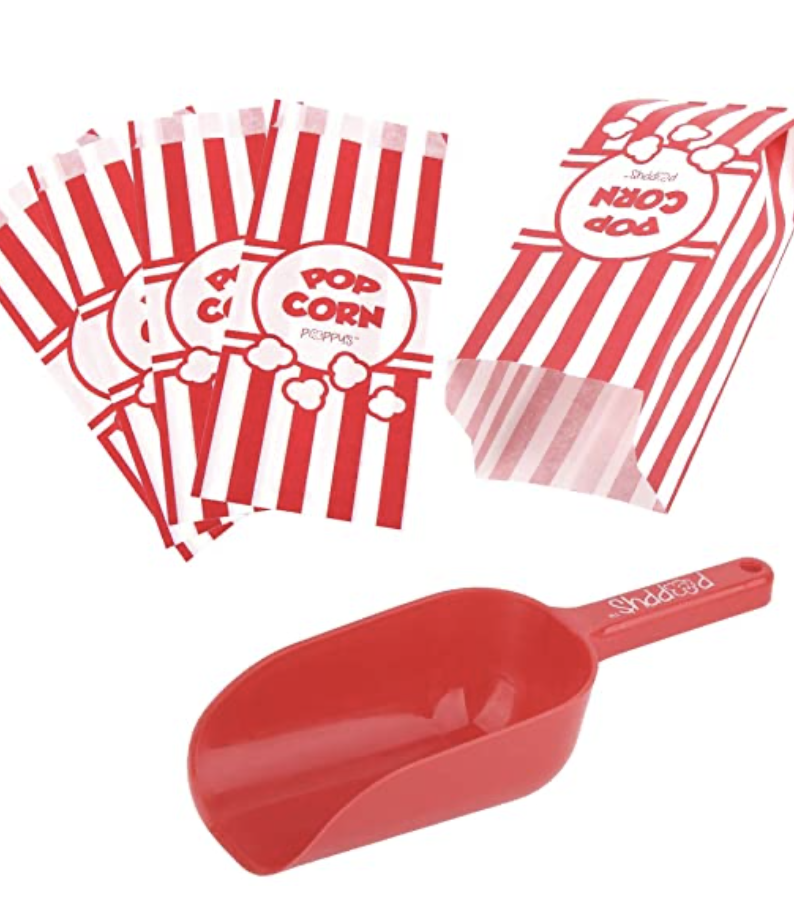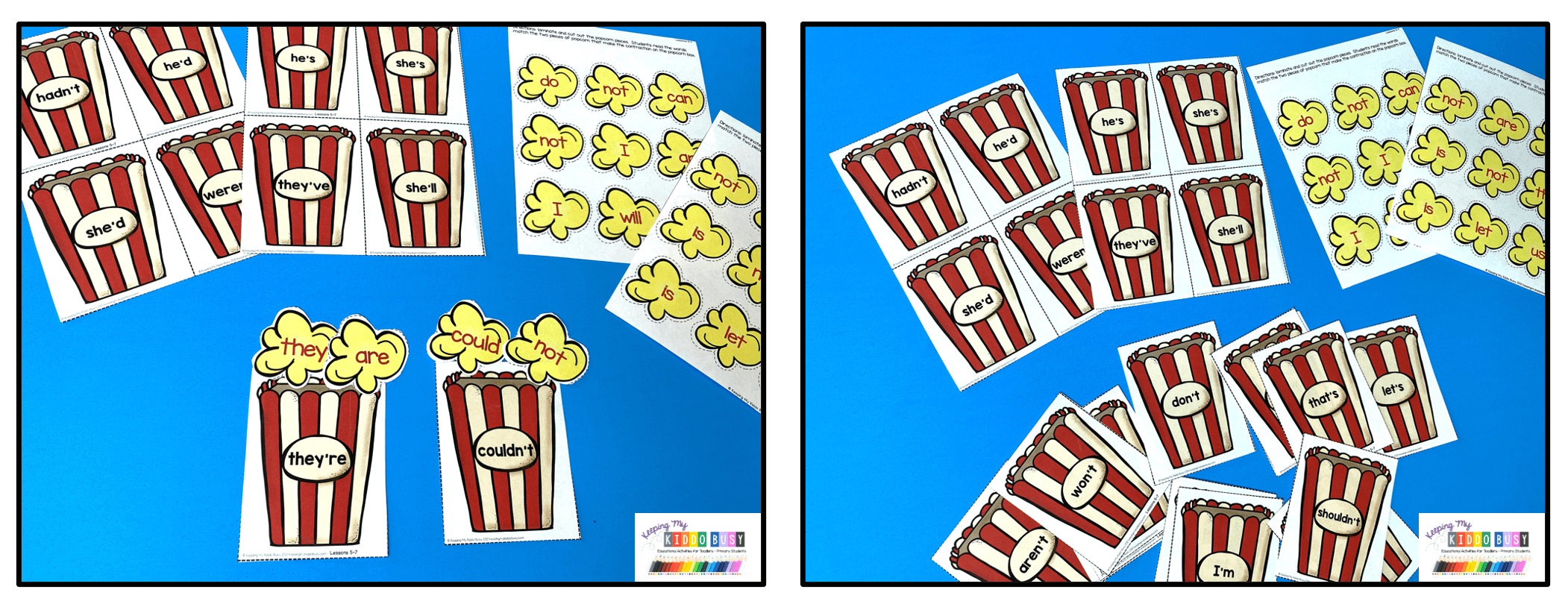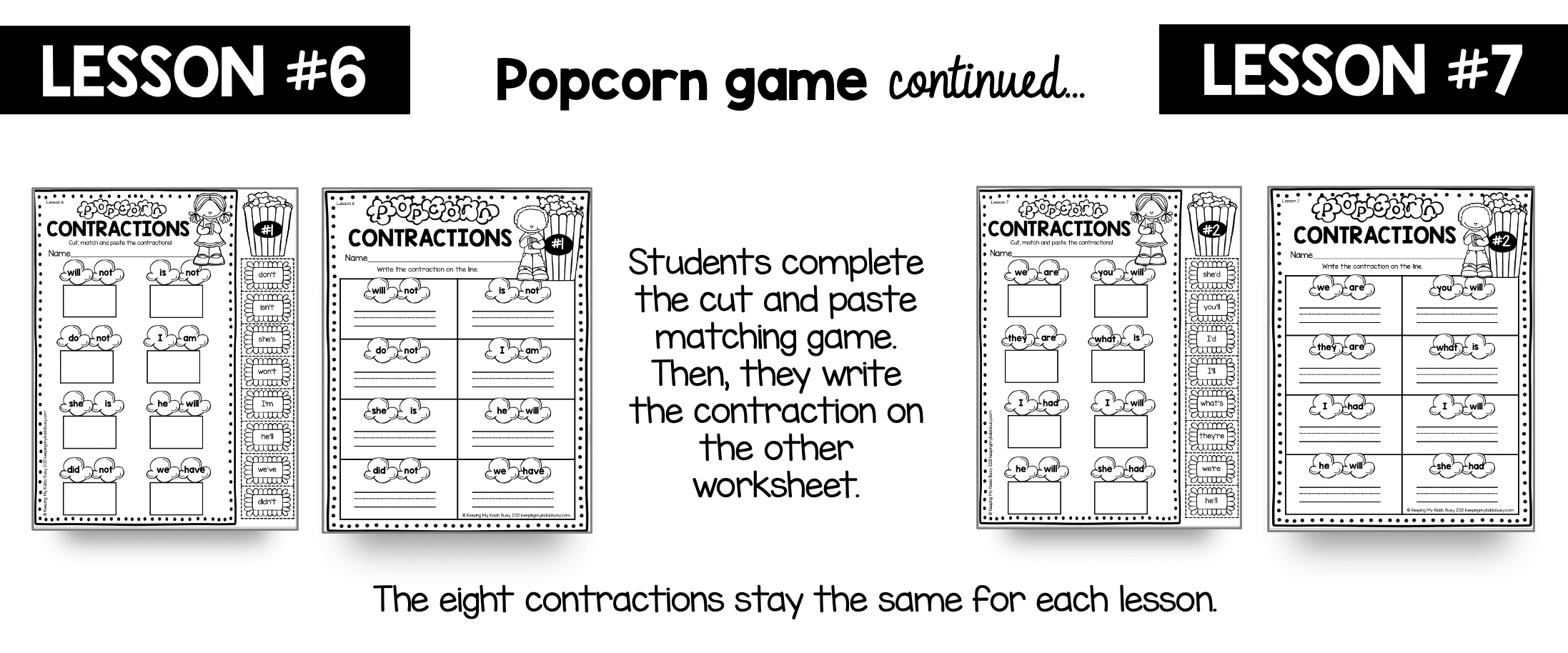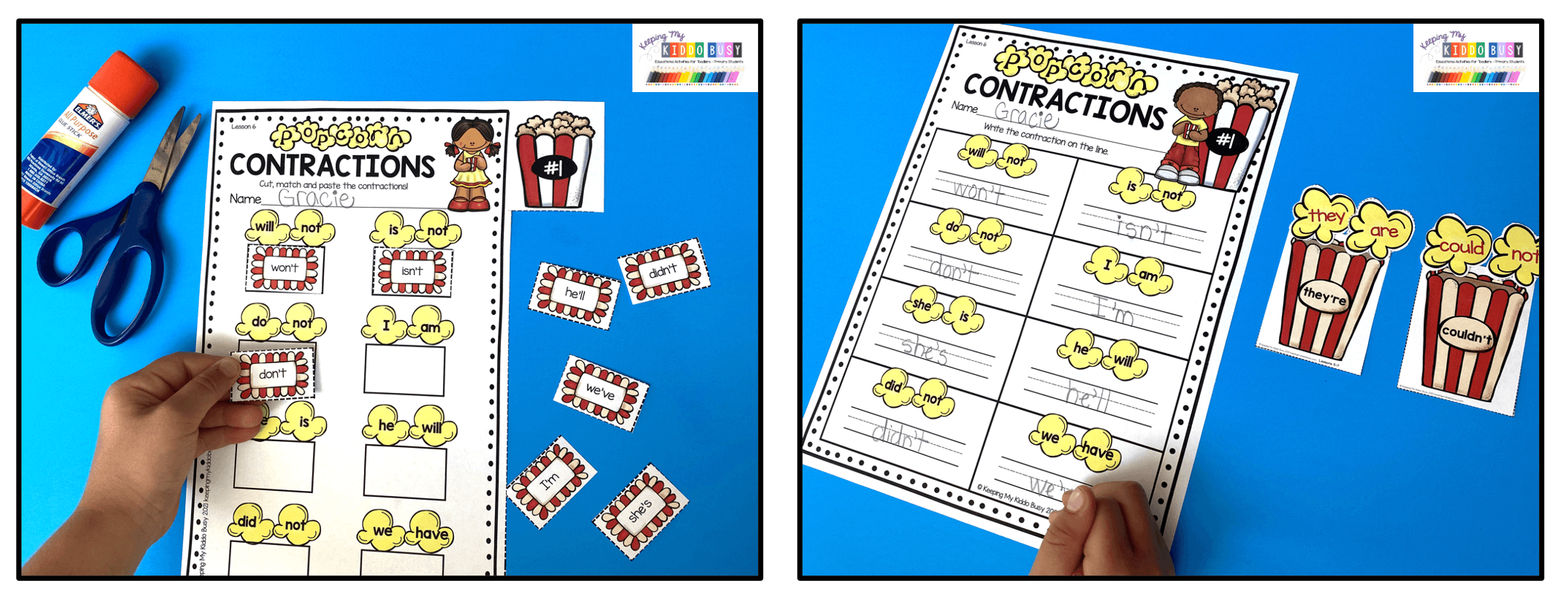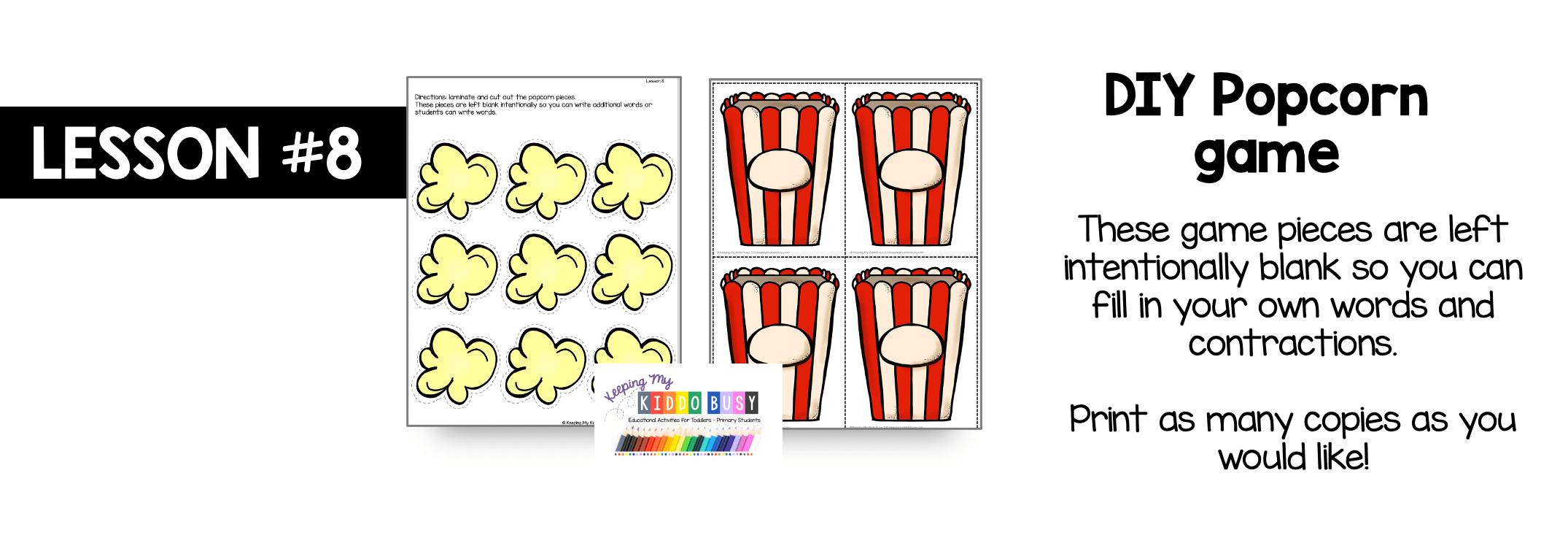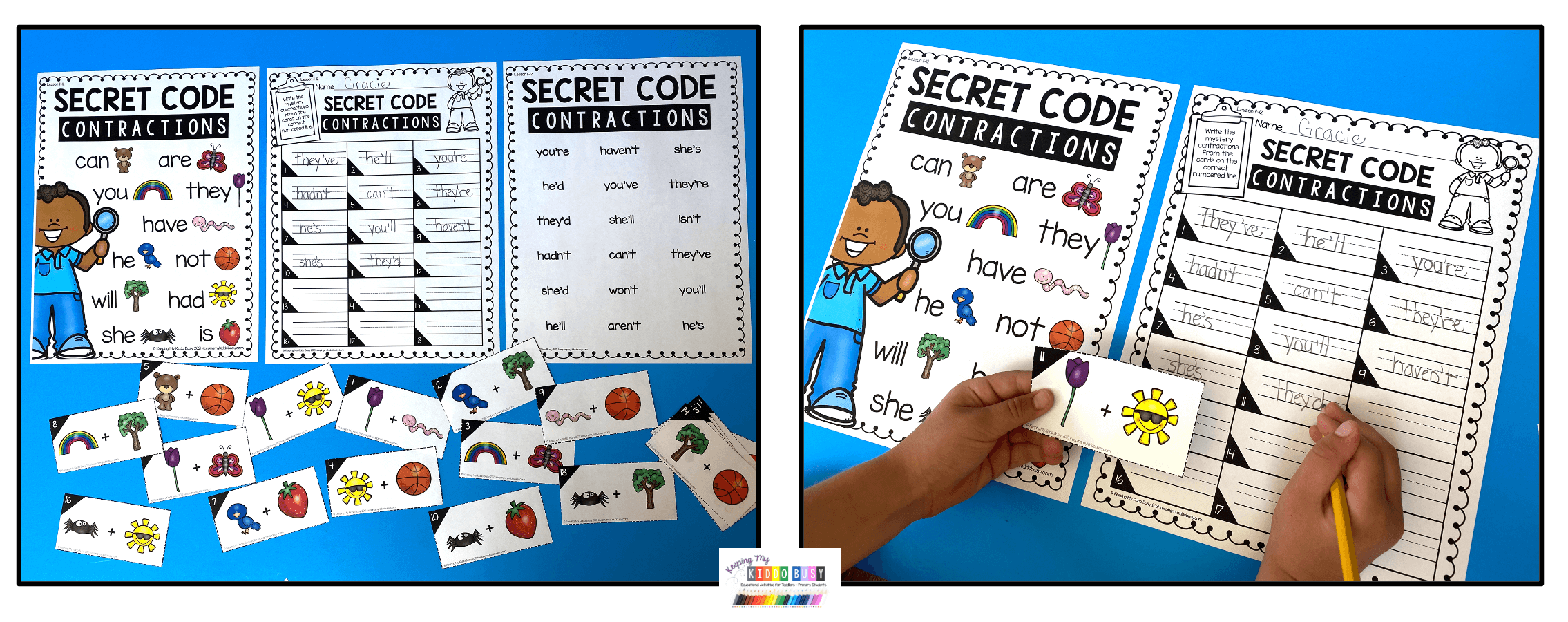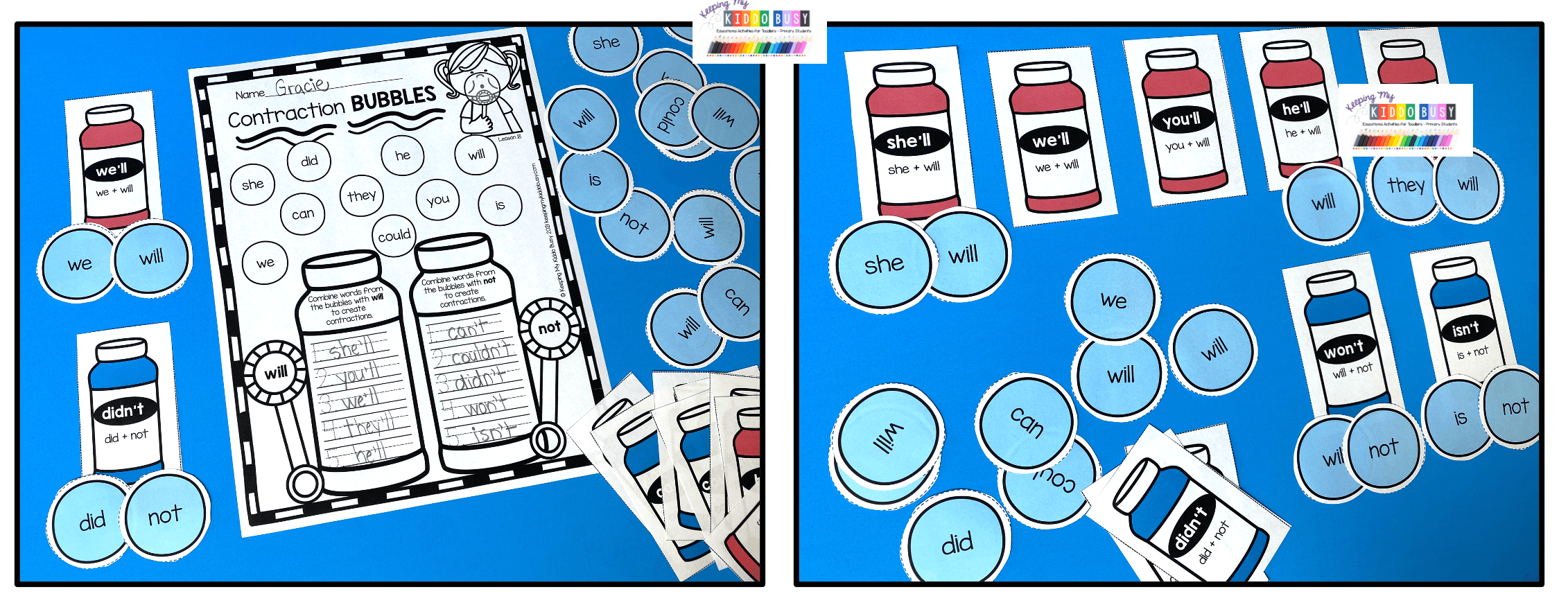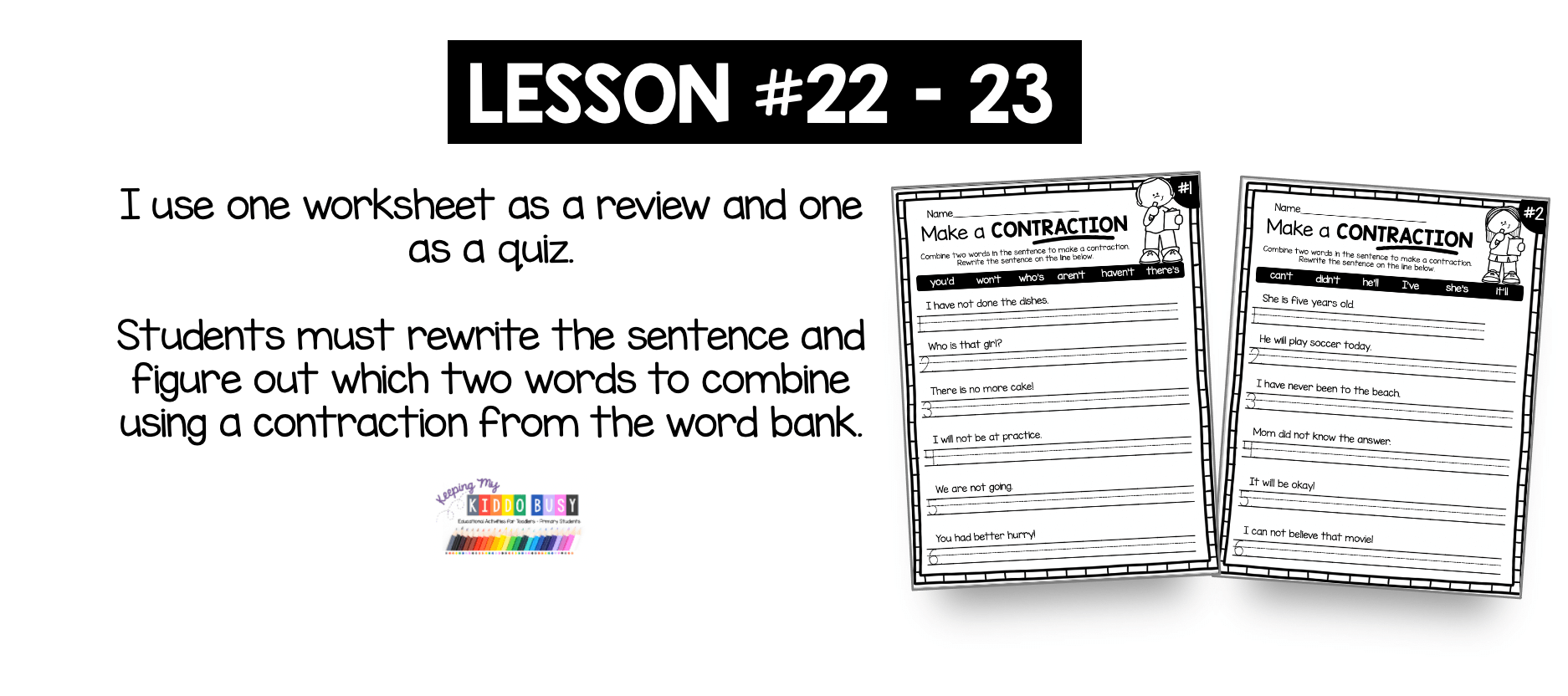How to Teach Contractions - GRAMMAR FREEBIES
GRAMMAR UNIT 7: CONTRACTIONS
It is time to teach contractions!
My students have come so far with their grammar skills in units 1-6. Our language has improved so much as we have been learning about nouns, adjectives, verbs, adverbs, capitalization, and punctuation.
Students now understand the patterns in our language and sentence structure.
Now we are ready to learn about contractions.
I share free resources right here on this blog post for you to try!
This page contains affiliate links. Read Full Disclosure
This unit is perfect for end of the year kindergarten (or anytime for your advanced group of kindergarten students), first grade, or second grade.
Let’s get started.
This unit is so fun to teach! I connect contractions to surgery because it really gets students’ attention.
The idea of “cutting out” or removing letters and then “sewing” or putting the words together makes the perfect analogy to surgery.
I start by showing students these slides.
In lesson 1, the slides coordinate perfectly with the activity page shown below.
The slides are also in order, so the first slide is can not = can’t and that corresponds to #1 on the worksheet.
As you show each slide, students fill in the answers on their page. It is amazing how much students learn in this very first lesson!
It is also so easy to keep them engaged, and they are excited to perform “word surgery.”
I tell students that now they get to be the surgeon! This is such a fun, hands-on game for students to practice common contractions.
They match the puzzles and then fill in their coordinating activity page. What I love about this activity, is they have to write the letters they remove and then they write the contraction on the line.
If you really want to have fun with this, the kids love dressing up like surgeons.
I tell them it is time to perform surgery on these words and make contractions!
THESE caps are the best I could find for the quality, quantity and price.
Pair them with THESE masks and it is so cute!
THESE gowns are for adults but you can cut and and modify them for kids.
I found actual gowns for children HERE - they are white but they are so adorable.
I wouldn’t recommend gloves as then they have a hard time matching the puzzle pieces and filling out their writing paper.
I also introduce these anchor charts this lesson and have them hanging up for the unit.
Lesson 4 builds on lessons 2-3. Students get to make their own contraction band aids to match!
They get these white bandaids to cut out, fill in with words and then they can color.
Next, students can trade with a partner and practice matching the contraction and filling in their recording pages.
If you want this lesson to be even more memorable, bring in popcorn for the kids. They will absolutely love that!
If you split THESE cute bags with another teacher, it would only cost you each $6.00 for a class set (25 each) and it would make for a fun twist to the lesson.
As you introduce all of the contraction words on the popcorn game pieces shown below, students can participate with their real popcorn!
They can hold up two pieces of real popcorn, say the two words that make the contraction. Then, the best part is of course, is after saying the words… they can eat their popcorn!
For example, is not = isn’t
These next few lessons are so fun with popcorn contractions.
Each popcorn container shown in the photos above needs two pieces of popcorn to form the contraction shown. I laminate all the pieces for durability and this makes such a cute literacy center.
I do two activities in one lesson. First we complete the cut/paste activity where students cut out the contractions and paste them under the right popcorn pieces.
Then we move complete the other activity because it covers the exact same contractions. However, this second worksheet is more difficult because now they have to write the contraction on their own.
This makes a great quiz or check for understanding.
You can also split the activities up into two lessons and do them on different days. All of these activities can be used any way you wish that fits your schedule.
This is a fun extension lesson where students become the teacher and create their own game pieces. This is a really great way to see if students are remembering the contractions.
They write the individual words on popcorn pieces and then the contraction on the popcorn containers. They can then switch with a partner and match the words.
These pieces also work well for you to make other contractions you wish students to learn.
For lesson nine and ten we study 18 contractions (nine in each lesson.)
I suggest copying these pages front to back and do the coloring page first.
I can pull a handful of students that struggle while the rest of the class completes these on their own.
I love that most students can do both of these lessons independently at this point.
Students absolutely love these next few lessons. I tell them that they are contraction detectives and they have to figure out the secret codes written on the cards.
Print and laminate the secret code picture key, or simply display it on your front board.
I always provide scaffolding for students, so if they are stuck or aren’t sure how to spell the contraction, I have all of them written out on another anchor chart (see left photo above.)
This way students have everything they need to be successful. You can play this game a few times, and I suggest playing whole group first so they understand exactly what to do.
I love this game because it works on problem solving skills, contractions, sight words and promotes independence.
I always incorporate as much writing as I can into my lessons, so for these next five days students are writing sentences using contractions.
I suggest doing the first one with them, and then the next four I have them do on their own.
So many contractions use the words will and not. This adorable bubble activity focuses on the contractions that use these two words.
They match the bubbles to the bottles to make the contraction shown. All the pink bottles have the word will in them and all the blue bottles have not in them.
This helps students recognize the common contractions and notice the patterns within the words.
These are super easy to make and are fun. After they create these, they can quiz each other and then lift the flaps to check.
The kids love this game because they get to use dice.
I made two different recording sheets so two students can use the same game board, or it can also be played individually.
I put this at the end of the unit because there is no word bank included, so students really are using their own knowledge and skills about contractions to play.
These are our last two lessons! By now, students are contraction rock stars. They have had so much practice in this unit, and as the lessons progressed the activities had less scaffolding to promote critical thinking and independence.
My goal is for students to now be consistently using contractions in their writing. These last two activities help with this, and I use one as an activity and one as an end of the unit quiz.
WATCH THIS QUICK VIDEO TO SEE ALL THE ACTIVITIES INCLUDED
Ready to get started with this unit?!
Not sure yet? You can print these freebies!
CLICK HERE
“I am always so eager when the next grammar unit comes out. This one is like all the rest, and includes so many visuals and activities that engage all my students. Students of all abilities are able to participate. The lessons build on each other and are easy to follow and implement.”
